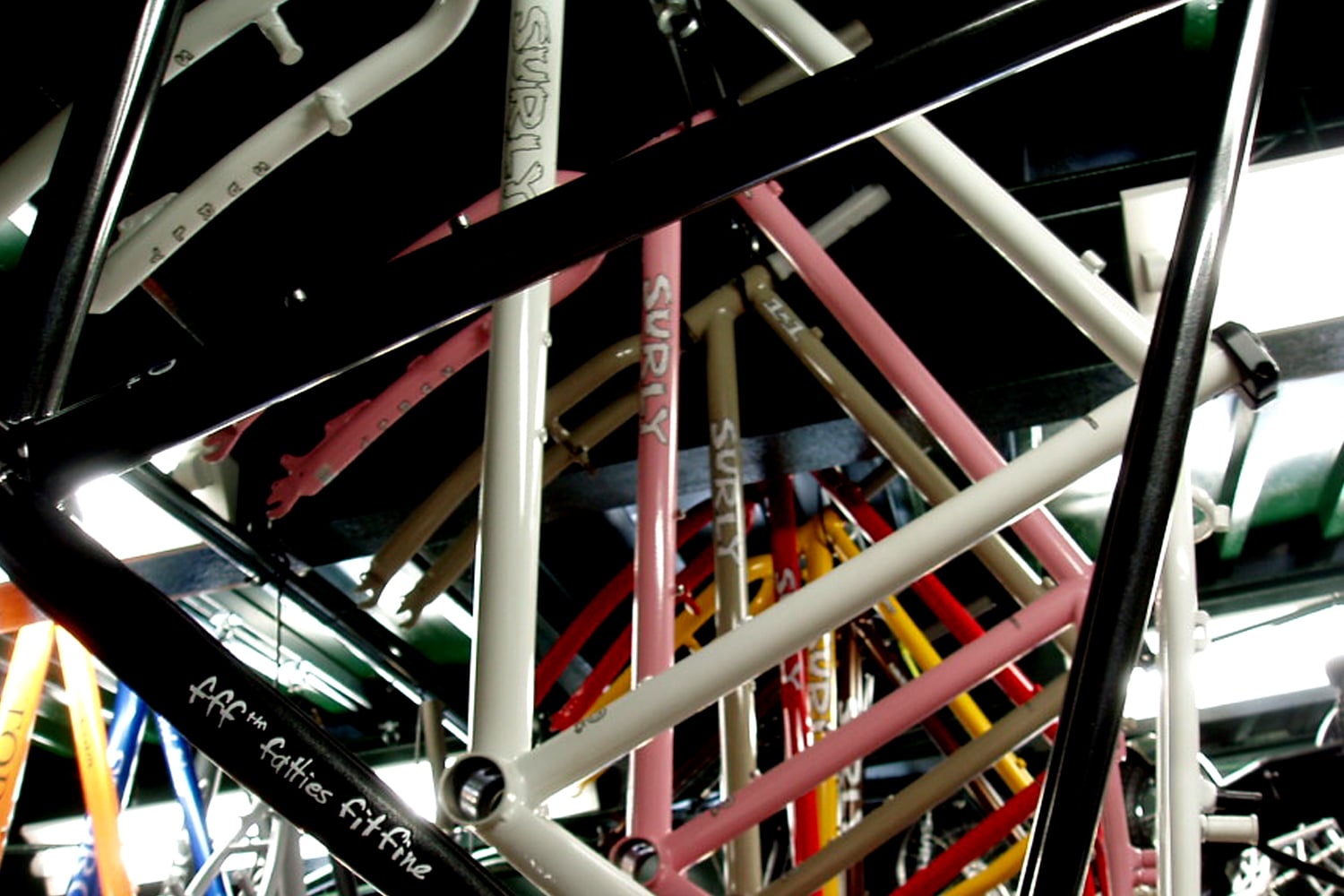So I’ve been seeing a lot in the news lately about new companies designing bikes that “solve all the old problems of the old bike”. They achieve this by adding extra moving parts, adding new pivot points, enclosing the whole thing in hard candy shell, integrating headsets/stems/handlebars/seats/other and endlessly searching for new materials with which to build their new and improved monoliths of industry.
I find it interesting how much energy is being put into this right now. By no coincidence is this happening during a time when more and more people are riding bikes. If there’s money in it (and there is) people will try to figure out a way to make a bunch of that money, and one of the best ways to do that is to tell everyone that you’ve fixed a problem with what came before and your version of a thing is the newest and best. Your version makes more sense than every other version that came before it. Because all of the others had this build in (and unspoken) “problem” that you have brilliantly solved, by adding more moving parts/pivot points/integrated hoo-hahs and so on.
The bike as it stands today is largely unchanged from the bike of yesterday (or the day before that or the day before that) and there is a very good reason for that. It works really really well. A bicycle is a piece of technology that you can dip in a giant bowl of mud, pull it out and immediately start riding; you don’t even have to wipe it off first. Try really hard to think of another piece of technology that you could do this with. Sure they make things all fancy and waterproof now, but a bike doesn’t even need that. It’s an incredibly simple piece of machinery that operates incredibly well, even without any kind of maintenance. Think of the bikes you see out there on the road: covered in rust from head to toe, not just the frame, but all the moving parts as well, and people just ride them down the street like that. It’s true that that kind of bike doesn’t operate as well as an even occasionally maintained machine, not to mention one that has regular maintenance but it operates none the less and it will get you where you’re going.
The mud test is something that has actually happened to me. Riding my Moonlander around the river trails last fall, I tried to go around a creek in order to avoid crossing on a felled tree (because I’m a coward) and ended up around a corner planting the Moony headfirst in a quagmire that would make Vorgornus Koth soil his jammies. Now I’m a big dude (fatso as some would call me), and when I plant a bike in mud, it goes in deep. The entire front wheel (up to the handle bar) and the crankset, chainrings and all were fully submerged in that thick goo. The back wheel was spared as the momentum of me going over the bars kept it from even touching the mud, it stood up like an erect monument to sunken treasures and bad decisions everywhere. I pulled the bike out of the mud, walked it (above my head) to firmer ground, got up on it, and rode home. I cleaned and checked it when I got there (about 11 miles later) but it rode remarkably well and took no damage, just needed a deep clean.
On a side note, the fall was the most painless I’ve ever had (there have been many) it was like going OTB into a marshmallow, so soft and sweet.
Mud tests aside, it’s important to note that I’m not saying that bikes can’t be better, on the contrary, I think that everything can be better. I just question the notion (rational) of taking something that is so simple and works so incredibly well and trying to reinvent it, instead of refine it.
If all technology worked in that fashion, what would a wheel look like??
Now go dip your bike in mud and ride home.
(for legal reasons I can’t actually tell you to do that so don’t)
(but really do)
(no don’t)
(wink)
 Surly Bikes
Surly Bikes